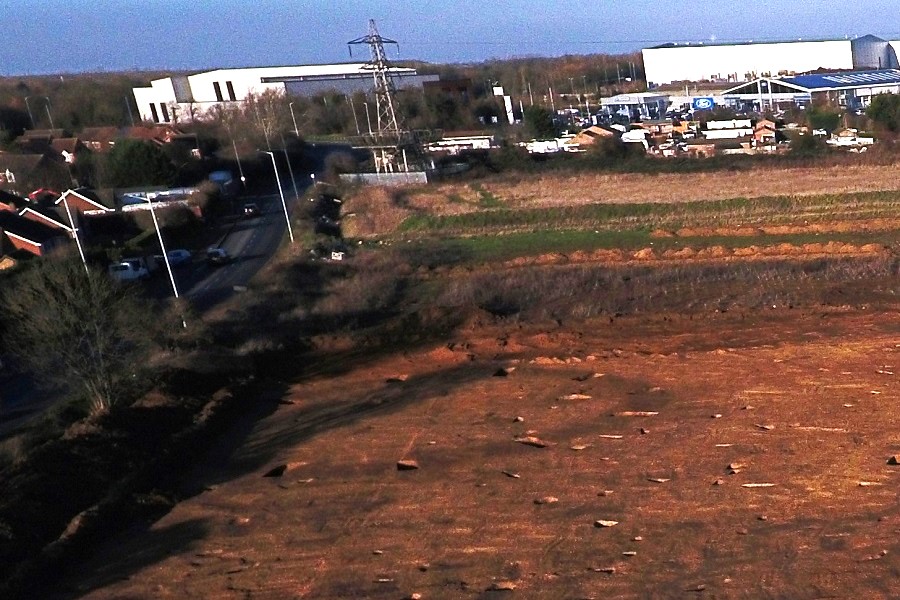An excavation being undertaken in advance of construction of new industrial units has revealed a prehistoric ring-ditch alongside Edgerley Drain Road in Fengate. It was previously known from aerial photographs but there is now a unique opportunity to fully investigate and to place it in the context of other prehistoric features nearby.
This type of ring ditch is often associated with Bronze Age round barrows where a circular quarry ditch was dug to provide material for an internal mound, since erased.
The current excavation is the latest in a long series of investigations as “Eastern Industry” has been extended north and east from central Peterborough.
The oblique aerial photo above looks north across the ring-ditch, with Edgerley Drain Road to the left and Kingsgate Community Church in the distance.

Vertical shot of the same feature – Jan 2023 (Photo Credit – Rex Gibson)
Fengate – From Neolithic to Roman
Our earliest farming ancestors were active in the area from the Late Neolithic and by the Middle Bronze Age (1500 to 1150BC) a network of drainage ditches, field boundaries and trackways was well established. These boundaries were oriented at right angles to the then fen edge and point to the seasonal movement of livestock between the wetter fen and the dryer gravel terraces. A series of rectangular double-ditched “paddocks” (approx 50m by 40m) might indicate enclosures for the temporary holding of cattle.
Bronze Age settlement is evidenced by pits, roundhouses, burial mounds, pottery and inhumations. The quantity of finds is sparse suggesting a small and scattered population.
It is likely that variations in climate affected the attractiveness of the area to local people. During the Late Bronze Age and Early Iron Age (1150BC to 350BC) agricultural activity is more ephemeral. In the Late Iron Age there was a well-defined village referred to by Pryor as the Cat’s Water settlement (now the site of the waste incinerator). Moving into the Roman period, the field system differed from that existing a thousand years before; it featured trackway ditches running north-south.
Adjacent to Fengate we, of course, have the massive wooden causeway at Flag Fen leading to the fen island of Northey. The structure was maintained between 1300 and 900BC. It included a large wooden platform above the waters of the fen. Finds include many Bronze Age and Iron Age swords which appear to have been placed in the water as ritual offerings.
And just 2 miles to the south at Must Farm we have unique evidence of piled roundhouses from the late Bronze Age standing above the marshy waters of the Nene.
A full synthesis of all the evidence gained over the past 50 years is still awaited. The forthcoming report on Must Farm is likely to help in this respect. Meantime, here are a few snippets from some of the more significant contributors.
George Wyman Abbott and Prehistoric Fengate
It was amateur antiquarian, George Wyman Abbott who first recognised the importance of the prehistoric remains in the Fengate area. In the early years of the 20th century he observed the digging of gravel from various small gravel pits. He recovered sherds of highly decorated neolithic pottery, a style which is found quite widely across Britain but which is now often referred to as Peterborough Ware. He also identified ring ditches and other features.
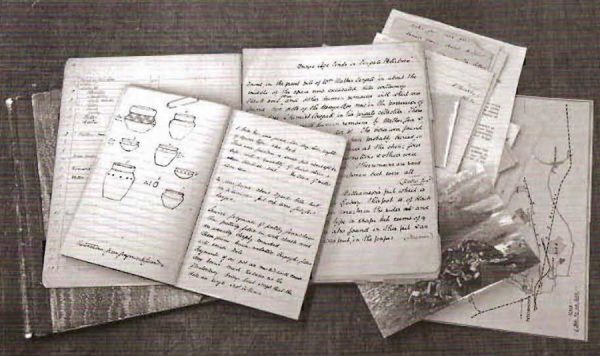
A collection of Wyman Abbott’s notebooks – Cambridge University Museum of Archaeology & Anthropology
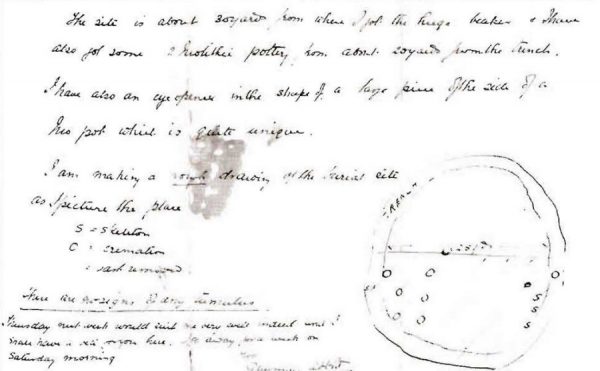
Wyman Abbott’s 1920 sketch of a ring ditch – Ashmolean Museum
Francis Pryor and Prehistoric Fengate
With funding from the Ancient Monuments Inspectorate and the Royal Ontario Museum of Toronto, Francis Pryor started, from 1971, to unravel the prehistoric archaeology of Fengate in advance of the new industrial area which formed part of Peterborough’s planned expansion. His team returned to the site each year until 1978.
Aerial photos of Fengate had begun to reveal a complex network of prehistoric features. Pryor’s open area excavations over a period of 6 years filled in a lot of the detail.
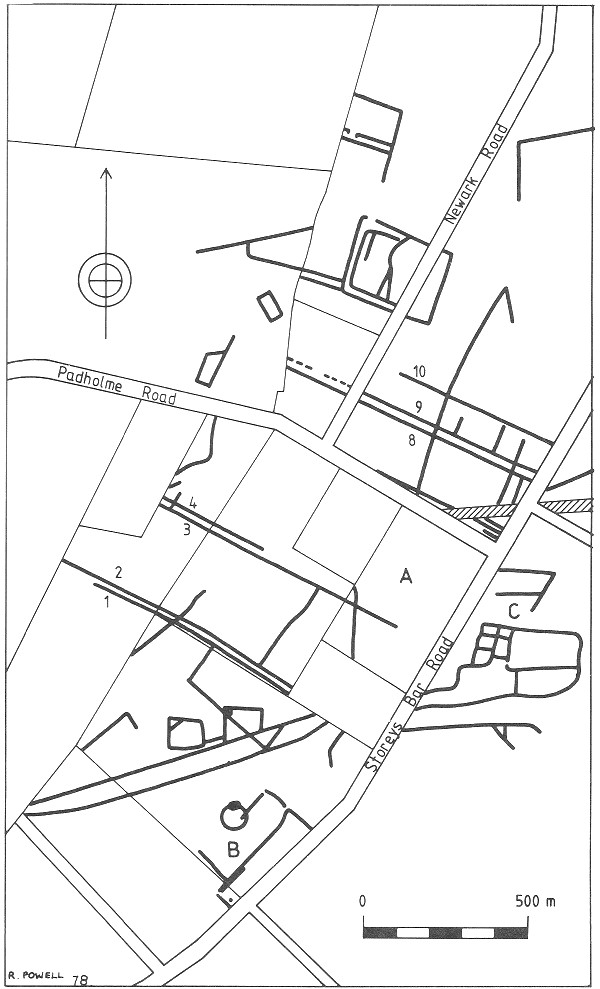
Simplified 1978 plan of the main Fengate crop marks:
A – Neolithic house
B – Late Neolithic settlement
C – Cat’s Water Iron Age settlement
1-10 – Main second millennium BC ditches
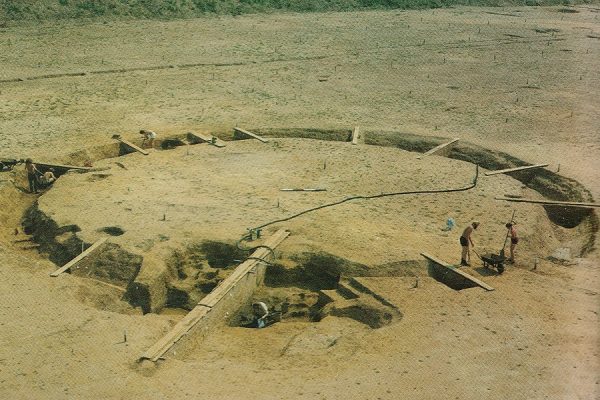
Excavation of late Neolithic ring ditch
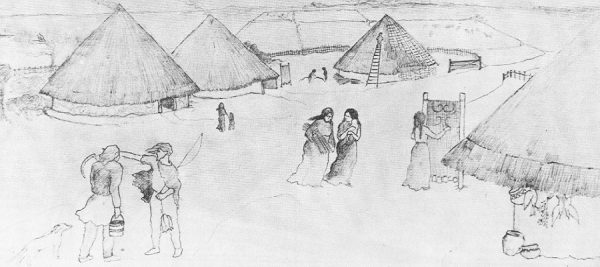
Reconstruction of the Cat’s Water Iron Age settlement by Sara Lunt
Fengate, Francis Pryor, Shire Archaeology, 1982
Extracts from the Nene Valley Research Committee annual reports, Durobrivae
Cambridge Archaeological Unit and Prehistoric Fengate
The Cambridge University unit, which also excavated Must Farm, has been repeatedly involved in surveys, evaluations and excavations along the Fen edge to the east of Storey’s Bar Road and Edgerley Drain Road as the commercial area has extended north east. The recent focus has been the area of Red Brick Farm.
Trenches dug in 2017 showed the fen limits of the Bronze Age field system and drove ways. A number of neolithic “tree throws” echoed earlier finds by others and gave clues as to the transition from a wooded landscape. The fen edges were cleared of woodland in stages between the Neolithic period and Early Bronze Age to increase the area of useable land, which was ever reducing due to the rising water table.
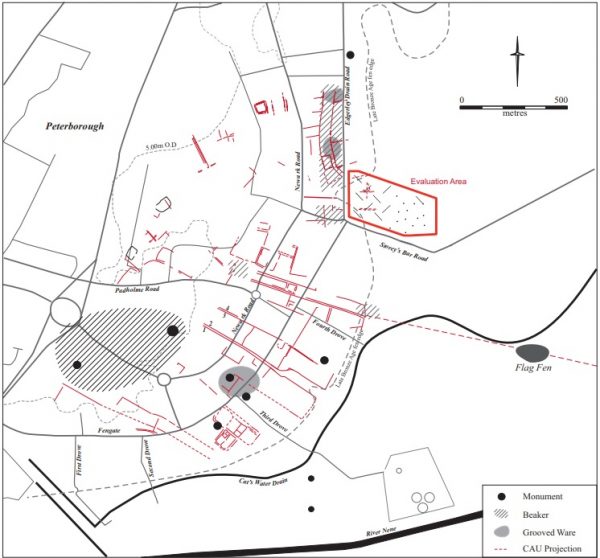
The Neolithic and Bronze Age Fengate landscape including ditches at Redgate Farm
Oxford Archaeology East (OAE)
OAE have been heavily involved in the study of the former sports grounds of Perkins Engines to the west of Newark Road. They have been able to observe the transition to the slightly higher gravel terrace away from the fen edge.
“The archaeological remains uncovered on the former Perkins Engines site revealed sequences of activity from the Late Neolithic to the Roman period now very familiar in the Fengate area of Peterborough. Beginning with probable Late Neolithic to Early Bronze Age pits, through the well-documented Middle Bronze Age field systems and enclosures, onto the more sporadic and episodic evidence of Late Bronze Age to Early Iron Age activity, and culminating with the establishment of larger Romano-British field systems and associated features.”
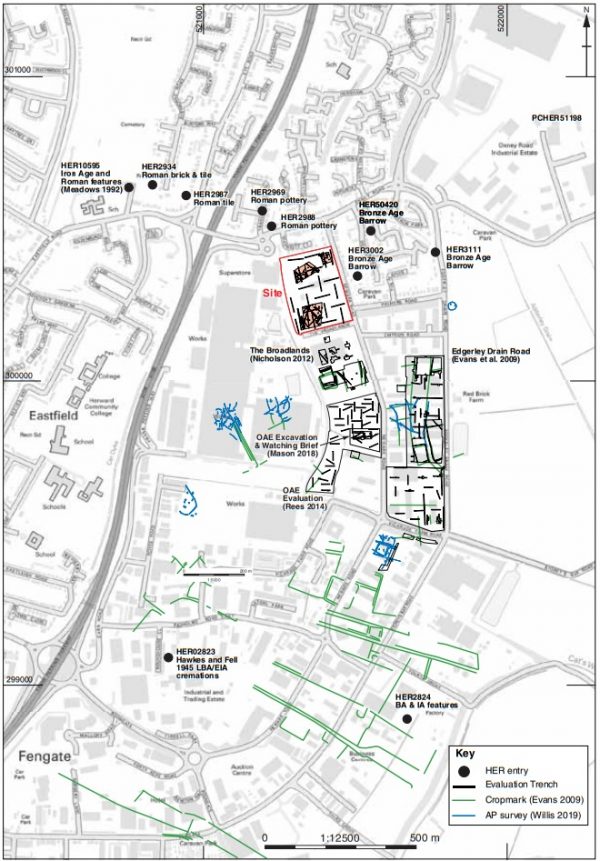
Overview of nearby evaluations, excavations and aerial surveys – 2019 Report

